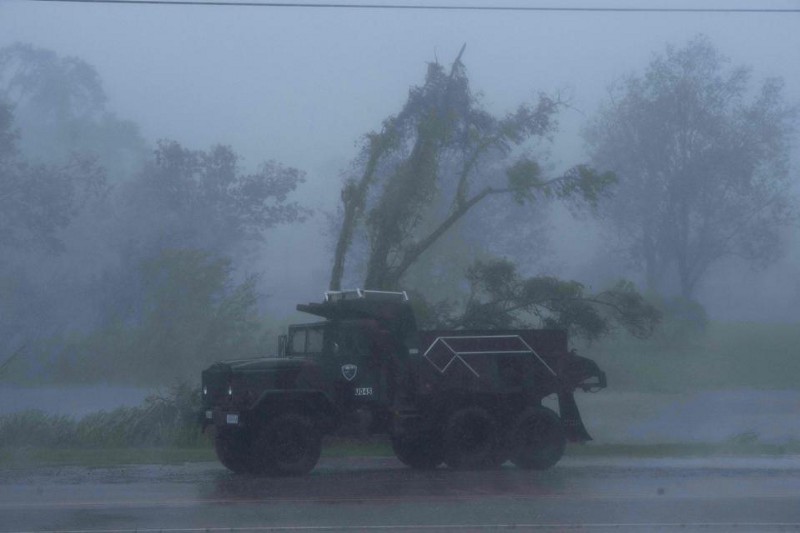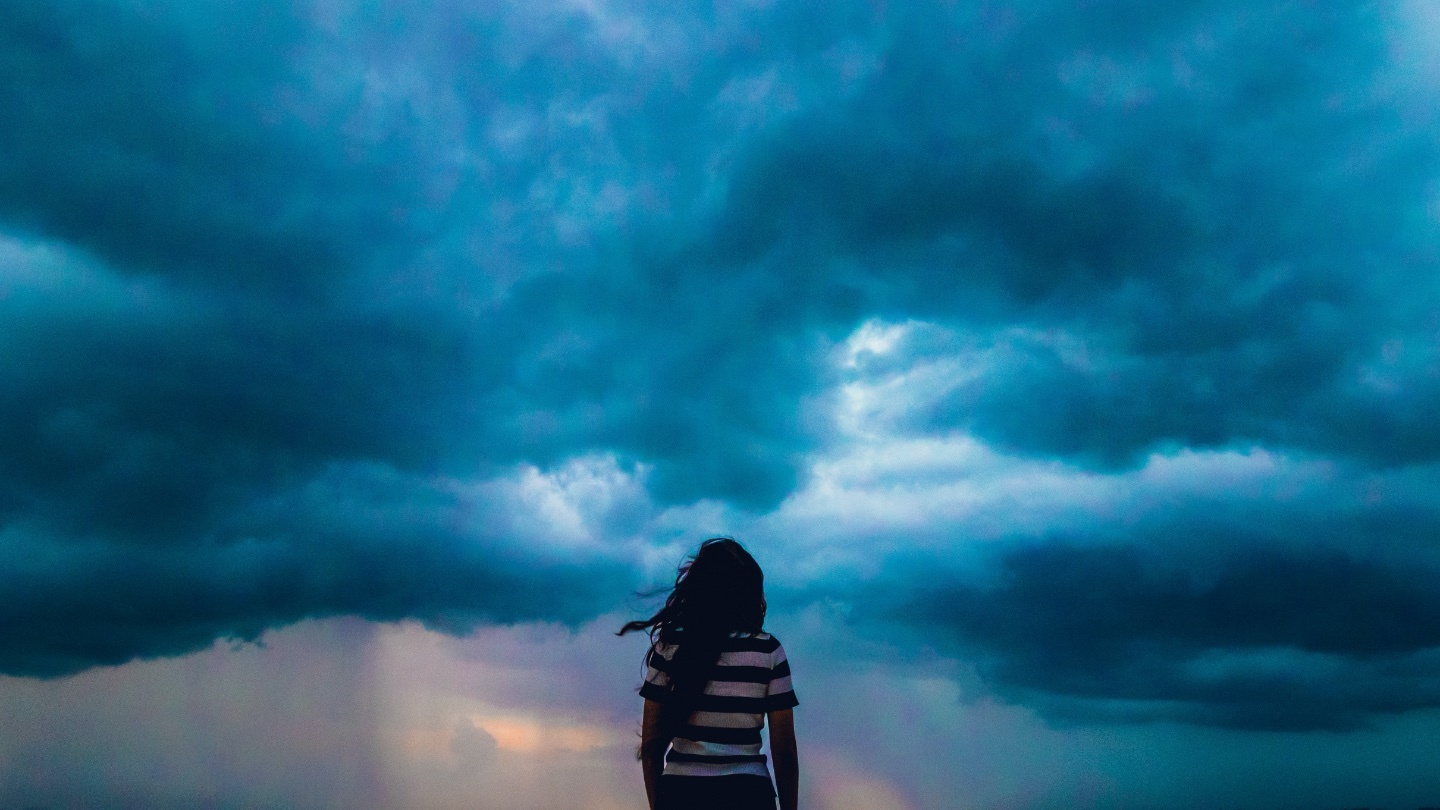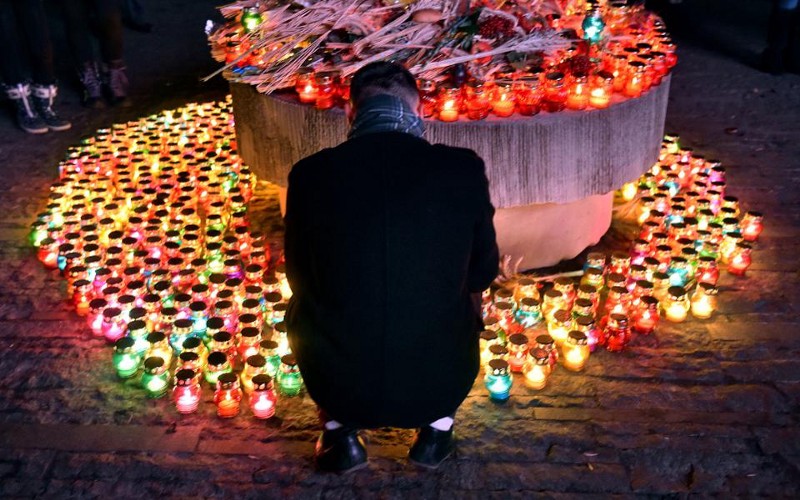Intensifying storms? More than half of Grand Bahama Island is under water.

Photo credit: Paul Halliwell / U.K. Ministry of Defense / Agence France-Presse / Getty Images
- Hurricane Dorian battered the Bahama Islands for nearly two days.
- Over half of the island was submerged in water.
- Climate scientists are starting to think that the intensification and length of hurricanes can be traced to climate change.
Islands in the Bahamas have taken the initial brunt of the devastating Hurricane Dorian. Places such as the Grand Bahama and Abaco Islands have suffered unimaginable damage of the likes the region has never seen before. One island that’s home to 50,000 people was 70 percent under water for nearly two days as the hurricane ravaged the land.
A few days have passed since first landfall and the Category 5 hurricane has spread out and began to threaten the United States’ East Coast.
Rescue missions are ongoing on the island of Grand Bahama, and a number of international organizations and nations have stepped up and provided aid. So far, the United States Coast Guard and British Royal Navy have sent in ships for assistance. The National Emergency Management Agency is asking for all localities to send in small boats, trucks, buses and more vehicles to help the rescue efforts on Grand Bahama Island.
Transit stations, such as seaports and airports, have been either flooded or destroyed — this makes reaching stranded citizens more difficult.
Hurricane Dorian’s Bahamas destruction
Aerial footage shows absolute destruction in Hurricane Dorian’s wake. Shipping containers torn and strewn about, houses decimated and boats flung far from the coast inland. Photos from a local news source “Our News,” shows the damage in more detail.
Hurricane Dorian is the strongest hurricane in history to make landfall and hit the Bahamas. Winds peaked at 185 mph, it’s only surpassed by 1980’s Hurricane Allen which hit speeds of 190 mph. Although it was a little faster, that hurricane paled in comparison to the duration and intensity that Dorian wrought on the Bahamas.
In the past few days after initial landfall in the Bahamas, the hurricane has been battering the East Coast as a lessened Category 2 storm.
The hurricane has broken records for its length and intensity as it spent a lot of time over the Bahamas. This is the fourth straight year in a row, where a Category 5 hurricane has formed in the Atlantic. It’s now the longest streak on record.
The definition of a Category 5 storm is explained in the following manner:
“Catastrophic damage will occur: A high percentage of framed homes will be destroyed, with total roof failure and wall collapse. Fallen trees and power poles will isolate residential areas. Power outages will last for weeks to possibly months. Most of the area will be uninhabitable for weeks or months.”
The severity of this last storm is the greatest ever experienced by a populated region in the Atlantic.
Climate change and stronger hurricanes
Scientists generally agree that warmer temperatures are causing storms to become stronger and longer lasting.
Research published in the journal Climate and Atmospheric Science by NASA scientist Tim Hall indicated that storms are becoming much more likely to stall over land, prolonging the damages and catastrophe for a community. More rains will fall and there’s a faster onset of flash floods.
Hall found that hurricanes have slowed around 17 percent since 1944, while annual coastal rainfall from hurricanes has increased by about 40 percent.
Hall was still surprised by the extent of damage that the hurricane caused.
In reference to watching the storm’s path Hall said,”Just spinning there, spinning there, spinning there, over the same spot, you can’t help but be awestruck to the point of speechlessness.”
Although the storm is shocking, leading meteorologists and climate scientists predict that more hurricanes will have this kind of intensity as the climate warms.
Researchers from the National Oceanic and Atmospheric Administration published a study in February, titled “Recent increases in tropical cyclone intensification rates,” with new data regarding the cause of this phenomenon. At one point they write, “Natural variability cannot explain the magnitude of the observed upward trend.”
A whole host of issues comes along with stalled hurricanes and rapid intensification. The science isn’t concrete yet, but experts have a sinking suspicion that climate change is to blame — at least in part — for this new type of monster hurricane that ravaged the Bahamas.





